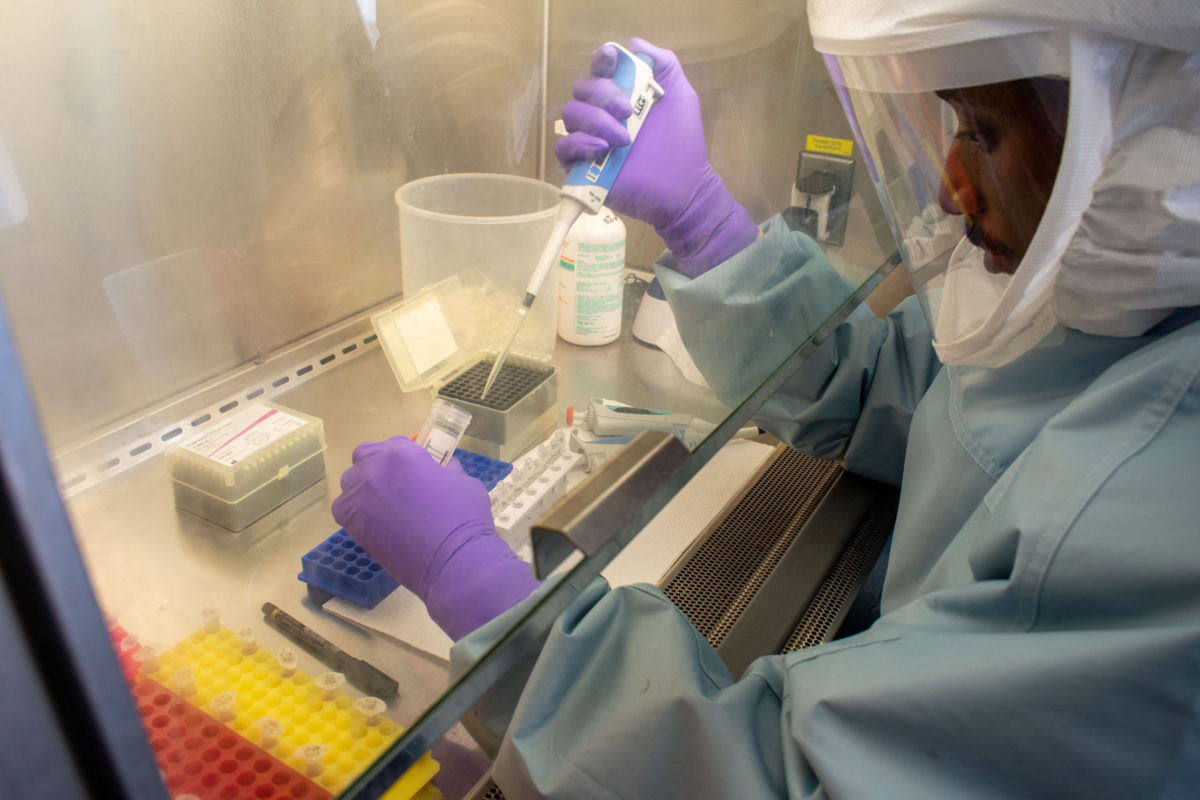By Barbara Pfeffer Billauer
Throughout the COVID-19 pandemic, much air time and social media space has been allocated to the lab leak vs. natural spillover dispute regarding the origins of SARS-CoV-2.
To summarize briefly, the question is whether the pandemic was caused by a leak from a biosafety level (BSL) four lab in Wuhan, China, or whether it arose naturally as a consequence of a virus jumping from a bat to an animal and then to humans.
Given that the “truth” will likely never be known, and certainly not provable, the question becomes: is it important to seriously consider the lab leak theory?
The answer, I suggest, is an unabashed yes — but not for the reason you might think. The question is important prospectively, not retrospectively. Debating the origins of the COVID-19 pandemic is a fool’s errand. Considering laboratory accidents writ large, however, is important, as they remain a potent threat to international biosecurity.
Currently, at least 42 BSL four labs are operating world-wide, with 18 more planned. These laboratories research “lethal and exotic agents that pose a high individual risk of aerosol-transmitted laboratory infections and life-threatening diseases that are frequently fatal.” In the U.S., 15 biosafety level four labs (two national, 13 regional) are operational (under the aegis of the National Institute of Allergy and Infectious Diseases) or planned. More BSL-3 level labs, which research less toxic, but still dangerous, organisms, abound. Generally, COVID-19 specimens are handled in BSL-3 labs.
Ostensibly, the purpose of these laboratories is purely defensive. Their job is to provide basic research and pursue development of new vaccines and treatments for these pathogens. Ten American regional university centers for excellence with access to these pathogens also were created to “develop effective treatments and treatment strategies from basic research findings.”
Recent history might suggest otherwise. Biosafety Level Four labs studying Ebola, for instance, have been operational for over twenty years. Yet not until the end of the Ebola outbreak of 2014-2016 was a vaccine produced — by a German private laboratory — based on research done in the Public Health Department of Canada. As one researcher recalls, “No one was interested in Ebola” until a 2009 laboratory accident when a German researcher working with Ebola at a BSL4 accidentally pricked her finger. In other words, research was conducted (who knows why), without “an approved treatment nor a postexposure prophylaxis (PEP) …for Ebola hemorrhagic fever” existing.
This is not to say these labs are developing bioweapons. Various declarations, protocols, conventions and international agreements prohibit their development and design, the most encompassing known as the Biological Weapons Convention (BWC). However, the BWC has no provisions restricting biological research activities. This lacuna makes enforcement problematic and abuse a concern. Further, “[n]o specific measures are set forth in the BWC to verify compliance with the obligation not to develop… biological agents or toxins for ‘hostile purposes’… [and] hostile intentions, like any other intentions, cannot be verified.” Of greater concern, however, is the risk of laboratory accidents from lawful activities.
Laboratory accidents are far more common than one might imagine. As early as 1999, Health Canada reported over 5,000 laboratory accidents worldwide, with 190 deaths. By the second decade of this century, lab leaks at Biosafety level 3 and 4 in the U.S. were common enough, even at the CDC (where a 2014 leak resulted in exposure of personnel to anthrax), that Congress held hearings.
While disconcerting, these facts actually bode against the theory of a lab leak being the causal agent of the COVID-19 pandemic. While not uncommon, the number of cases and deaths from laboratory accidents is comparatively miniscule. In the most extreme report I’ve seen, only 80 cases and three deaths were reported from three separate incidents of smallpox leaks, all localized. In the CDC anthrax incident, no one became ill. Neither did the German Ebola researcher (although she was given a prototype vaccine). This can hardly compare with the continued COVID-19 pandemic resulting in millions of deaths and hundreds of millions of cases globally. In other words, the pattern of spread and contagion in COVID far more closely resembles past natural outbreaks than they do to lab leak incidents.
Nevertheless, while the evidence favors natural beginnings for this outbreak, nothing precludes such disaster in the future. Conventional negligence theory suggests that since it is likely a lab leak will happen, and reasonably foreseeable that microorganisms will escape (perhaps one engineered to infect humans), reasonable preventive measures are indicated.
So, what could those be?
Private organizations, such as the International Biosecurity and Biosafety Initiative for Science (IBBIS), in conjunction with the Nuclear Threat Initiative (NTI), are being created to prevent accidental agent misuse, including developing new tools such as advanced DNA analysis. Nevertheless, initiatives and responses seem to be directed to early containment after a threat has materialized.
While international recommendations (“norms” or guidelines) exist, prevention protocols are incomplete and elective. For example, standardized measures addressing gain of function research, which describes the manipulation of bioagents to explore how they might infect humans, are lacking. Individual countries and laboratories have instituted preventive self-regulation, however these vary country-by-country. Taiwan has engaged with international partners to perform “Joint External Evaluations” and developed national legislature for regulating high containment laboratories. Other countries have not been as diligent.
I suggest that more attention to prevention protocols — standardized internationally, along the lines of inspection and maintenance requirements for nuclear reactors promulgated by the International Atomic Energy Agency (IAEA), with mandatory external inspections of BSL 3 and 4 labs, might be one solution. Given the international havoc wrought by the virus, it is not unlikely that countries otherwise averse to American interests might well agree to preventive measures that are designed not to cast blame. Let’s take advantage of this opportunity.
